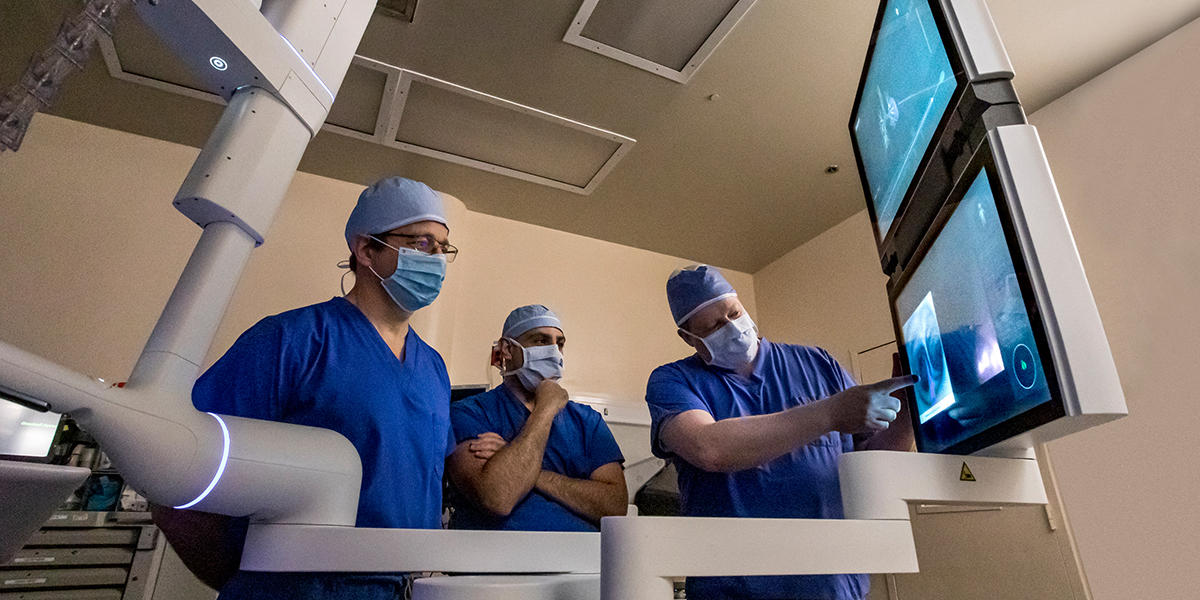Thoracic Surgeon Brainstorming Sessions Lead to a Lean Program and Better Patient Outcomes
Efficiency-driven care model yields 40% cost reduction and low readmissions at Hackensack University Medical Center

Guided by his MPH perspective, Nabil Rizk, M.D., saw opportunities to save time, cost and hospital resources. Taking this on as a department mission led to 40% cost savings and low readmission rates over 5 years of reviewing, refining procedures, diagnostics and length-of-stay drivers.
What started out with group-wide brainstorming sessions soon permeated the team’s culture. And database-driven decisions led the team to eliminate unnecessary tests. Where they saw potential, they would pilot changes and after observing patients, decide whether to continue as a new care protocol.
They eliminated X-rays that don’t influence the course of treatment, such as opting for follow-up X-rays a week after discharge only in response to symptoms such as shortness of breath. With wedge resection, they perform just one X-ray, after removing the drain. Even when malignancy is suspected, they chose to eliminate standard preoperative biopsies, because the potential for false negatives means the biopsy outcome won’t change their plan to pursue surgery.
Additionally, a revamped standard sequence of diagnostics eliminated the need for repeat tests and imaging.
The team also shortened the care cycle by changing how patients are seen throughout their care experience. Appointments with multiple group members and tests are coordinated to occur in one patient visit. And patients expedited upon initial refer, in many cases seen the same or next day, when CT scan images are available. From initial consult to surgical procedures and follow-up typically occurs in a 2-week window, pending any imaging or biopsy results, valuable for patients awaiting a potential cancer diagnosis and treatment.
While this quick, streamlined care approach applies in roughly 90% of cases, additional imaging, hospital monitoring and specialty consults are always available and readily accessed when cases merit.
Dr. Rizk noted that in general clinicians are paradoxically not incentivized to question or cut potentially unnecessary protocols, such as imaging and tests. They tend not to question what they were originally trained to do, or have litigation concerns about removing diagnostic or follow-up protocols, even when they do not typically add value.
But clinically, he notes, there is no evidence to support many monitoring-focused protocols. The team rose to the efficiency challenge when tasked, and changes implemented have realized resource and time efficiencies without negatively affecting outcomes.
In addition to evaluating care protocols, the team looked at their staffing approach. Nurse practitioners are empowered to make decisions independently, with surgeons available as needed for consult. This consistent level of efficient care is possible because of group-defined care decision trees.
The surgeons now round together to produce better, more efficient decisions, which is especially productive with complex cases. Even rotating residents have contributed ideas to enhance pain management to support shorter hospital stays.
Learn more about thoracic surgery and pulmonary care innovations at Hackensack University Medical Center.
If you are a patient looking for expert pulmonary medicine care at Hackensack Meridian Health, please visit our pulmonology services page to learn about our specialties, find locations, and schedule appointments.
